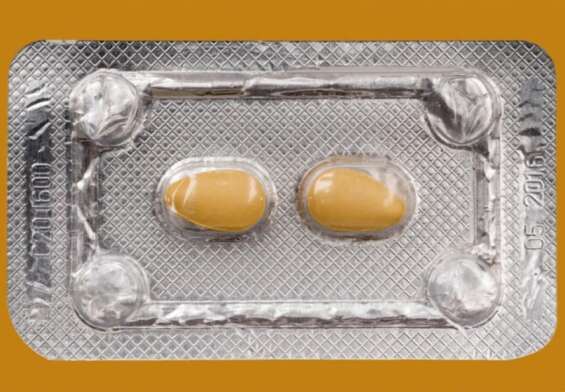
Prostate Cancer: Causes, Symptoms, and Treatments
Hey there, FitGAG readers! Have you ever heard of prostate cancer? It’s a common form of cancer that affects men, with potentially serious consequences. While prostate cancer can be a serious diagnosis, early detection and treatment can increase the chances of successful outcomes. In this article, we’ll cover everything you need to know about prostate cancer, including its causes, symptoms, and treatments. So, let’s dive in and learn more about this often-misunderstood condition.
Symptoms
Prostate cancer is a type of cancer that affects the prostate gland, which is a part of the male reproductive system. The symptoms of prostate cancer can vary depending on the stage and extent of the cancer.
Early Stage Symptoms
In the early stages, prostate cancer may not cause any noticeable symptoms. However, some men may experience the following:
- Frequent urination, especially at night
- Difficulty starting or stopping urination
- Weak or interrupted urinary flow
- Pain or burning during urination
- Blood in the urine or semen
- Pain or discomfort in the pelvis, back, or hips
Advanced Stage Symptoms
In the advanced stages, prostate cancer may cause the following symptoms:
- Erectile dysfunction
- Loss of bladder or bowel control
- Swelling in the legs or feet
- Fatigue or weakness
- Unexplained weight loss
It is important to note that these symptoms can be caused by other conditions as well, and having these symptoms does not necessarily mean that you have prostate cancer. However, if you experience any of these symptoms, it is important to seek medical advice and get tested.
Early diagnosis and treatment of prostate cancer can improve your chances of a successful outcome. It is recommended that men over the age of 50, or those with a family history of prostate cancer, discuss the benefits and risks of prostate cancer screening with their healthcare provider.
Causes
Prostate cancer is a type of cancer that affects the prostate gland, which is located just below the bladder and in front of the rectum in men. The exact causes of prostate cancer are not fully understood, but it is thought to be related to genetic and environmental factors. In this section, we’ll explore the common causes of prostate cancer, including any risk factors and genetic factors that may play a role.
Physical Causes
The primary cause of prostate cancer is an abnormal growth of cells in the prostate gland. This can occur due to genetic mutations or changes in the DNA that occur as a result of aging or exposure to environmental factors, such as smoking or exposure to certain chemicals.
Genetic Factors
There is evidence to suggest that genetic factors may play a role in the development of prostate cancer. The condition appears to be more common in families with a history of the condition, and certain genetic markers have been associated with an increased risk of developing prostate cancer.
Environmental Factors
Environmental factors, such as exposure to certain chemicals or toxins, may increase the risk of developing prostate cancer. In addition, lifestyle factors such as diet and exercise may also play a role in the development of the condition.
Identifying the underlying cause of prostate cancer is important for determining the appropriate treatment. Treatment for prostate cancer typically involves a combination of surgery, radiation therapy, and/or chemotherapy. In addition, other treatments may be prescribed to address specific symptoms or complications of the condition. In the next section, we’ll explore the diagnostic process for prostate cancer.
Diagnosis
The diagnosis of prostate cancer typically involves a combination of a physical examination, medical history review, and various tests. The healthcare provider will look for signs of prostate cancer, such as an enlarged or irregular prostate gland, along with other symptoms such as difficulty urinating, blood in the urine or semen, or pain in the hips, back, or pelvis.
In some cases, additional tests may be recommended to help confirm the diagnosis and determine the best course of treatment. These tests may include:
- Prostate-specific antigen (PSA) test: A blood test that measures the level of PSA, a protein produced by the prostate gland. Elevated PSA levels may indicate the presence of prostate cancer.
- Digital rectal exam (DRE): A physical examination of the prostate gland, performed by inserting a lubricated, gloved finger into the rectum to feel for any abnormalities or growths.
- Biopsy: A small sample of prostate tissue may be taken and analyzed under a microscope to confirm the presence of prostate cancer.
- Imaging tests: Imaging tests such as a CT scan, MRI, or bone scan may be used to visualize the extent of the cancer and identify any areas of spread.
It’s important to note that prostate cancer may not cause symptoms in its early stages, and routine screening may be recommended for men at increased risk of developing prostate cancer. If prostate cancer is suspected, it’s important to seek medical advice from a healthcare provider who is experienced in diagnosing and treating the condition.
Early diagnosis and treatment can help prevent complications and improve outcomes. It’s also important to take steps to prevent prostate cancer, such as maintaining a healthy diet and lifestyle, getting regular exercise, and avoiding tobacco and excessive alcohol consumption.
Treatment
Prostate cancer is a type of cancer that affects the prostate gland in men. Treatment for prostate cancer depends on the stage and grade of the cancer, as well as the age and overall health of the patient. In this section, we will discuss the available treatment options for prostate cancer, how they can help manage symptoms and improve quality of life, and any potential side effects or risks associated with treatment.
Active Surveillance
Active surveillance, also known as watchful waiting, is a treatment option for prostate cancer that involves monitoring the cancer closely with regular check-ups, blood tests, and biopsies. This approach may be recommended for men with low-grade, early-stage prostate cancer, who may not need immediate treatment.
Surgery
Surgery to remove the prostate gland, known as a prostatectomy, is a common treatment option for prostate cancer. This procedure can be done using traditional open surgery or minimally invasive laparoscopic or robotic-assisted surgery. Surgery may be recommended for men with localized prostate cancer that has not spread beyond the prostate gland.
Radiation Therapy
Radiation therapy uses high-energy radiation to kill cancer cells. This treatment may be delivered externally using a machine that directs radiation at the prostate gland, or internally using radioactive seeds placed directly into the prostate gland. Radiation therapy may be recommended for men with localized or locally advanced prostate cancer, or as adjuvant therapy after surgery.
Hormone Therapy
Hormone therapy works by reducing the levels of male hormones, such as testosterone, which can stimulate the growth of prostate cancer cells. This treatment may be recommended for men with advanced prostate cancer, or as adjuvant therapy after surgery or radiation therapy.
Chemotherapy
Chemotherapy uses drugs to kill cancer cells. This treatment may be recommended for men with advanced prostate cancer that has spread to other parts of the body.
Immunotherapy
Immunotherapy works by stimulating the immune system to attack cancer cells. This treatment may be recommended for men with advanced prostate cancer, as well as those who have not responded to other treatments.
Active surveillance, surgery, radiation therapy, hormone therapy, chemotherapy, and immunotherapy are the available treatment options for prostate cancer. It is important to discuss the potential benefits and risks of each treatment option with a healthcare provider and to make an informed decision based on individual needs and circumstances. It is also important to practice healthy lifestyle habits, such as regular exercise and a healthy diet, to improve overall health and reduce the risk of developing prostate cancer.
Prevention
While there is no surefire way to prevent prostate cancer, there are steps you can take to reduce your risk of developing this potentially serious condition or minimize its effects. Here are some strategies for prevention:
- Maintain a healthy lifestyle: Eating a balanced diet that is low in saturated fats and high in fruits and vegetables, staying physically active, and avoiding tobacco and excessive alcohol consumption can help promote overall health and reduce the risk of prostate cancer.
- Consider prostate cancer screening: Regular prostate cancer screening can help detect the disease early when it is most treatable. Talk to your healthcare provider about when to start screening and how often to have it done.
- Manage underlying health conditions: Certain health conditions, such as inflammation of the prostate, may increase the risk of developing prostate cancer. Managing these conditions through proper treatment and self-care can help reduce the risk of prostate cancer.
- Consider medication: Some medications, such as finasteride or dutasteride, may help reduce the risk of prostate cancer in certain men. Talk to your healthcare provider to see if these medications are right for you.
- Maintain a healthy weight: Being overweight or obese may increase the risk of prostate cancer, particularly in men who carry excess weight around their midsection. Maintaining a healthy weight through a balanced diet and regular exercise can help reduce the risk of prostate cancer.
By taking these steps, you can reduce your risk of developing prostate cancer and minimize its effects if you do develop it. However, it’s important to remember that some factors that increase the risk of prostate cancer, such as age, race, and family history, cannot be controlled. If you have concerns about your risk of prostate cancer, talk to your healthcare provider.
Complications
Prostate cancer is a type of cancer that develops in the prostate gland, which is part of the male reproductive system. While prostate cancer may not cause any symptoms or problems for some individuals, it can lead to a variety of complications in others.
Some of the potential complications associated with prostate cancer include:
- Metastasis: Prostate cancer can spread to other parts of the body, such as the bones, liver, or lungs, leading to serious health complications.
- Erectile dysfunction: Prostate cancer treatments, such as surgery or radiation therapy, can cause damage to the nerves and blood vessels in the penis, leading to erectile dysfunction and difficulty achieving or maintaining an erection.
- Urinary incontinence: Prostate cancer treatments can cause damage to the urinary sphincter muscle or nerves, leading to urinary incontinence, a condition where urine leaks uncontrollably from the bladder.
- Bowel problems: Prostate cancer treatments can cause damage to the rectum or lower bowel, leading to bowel problems such as diarrhea, constipation, or rectal bleeding.
- Lymphedema: Prostate cancer treatments can cause damage to the lymphatic system, leading to lymphedema, a condition where excess fluid accumulates in the limbs or other parts of the body.
Early diagnosis and treatment of prostate cancer is crucial to prevent these complications. Treatment options may include active surveillance, surgery, radiation therapy, hormone therapy, or chemotherapy, depending on the stage and severity of the cancer. It’s important for individuals to discuss the potential complications and risks of each treatment option with their healthcare provider and to make an informed decision based on their individual needs and preferences.
Conclusion
So, there you have it, everything you need to know about prostate cancer. While this condition can be a serious diagnosis, early detection and treatment can increase the chances of successful outcomes. If you or someone you know is experiencing symptoms of prostate cancer or has risk factors, such as age or family history, don’t hesitate to seek medical advice and consider screening tests. And remember, maintaining a healthy lifestyle and getting regular check-ups can help reduce the risk of prostate cancer and other health issues. Thanks for reading, and until next time, stay healthy and stay happy with FitGAG!











